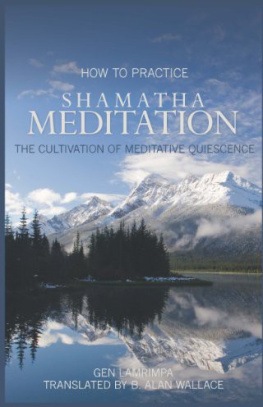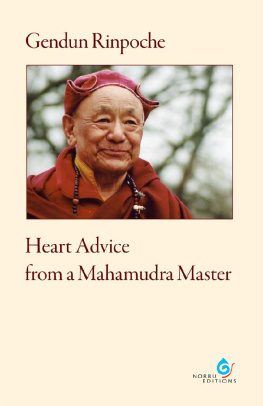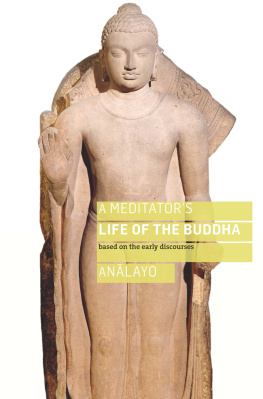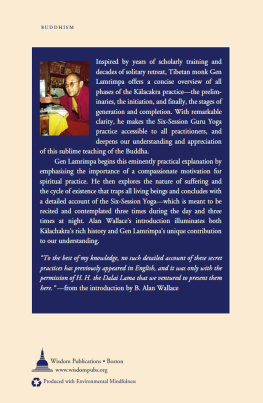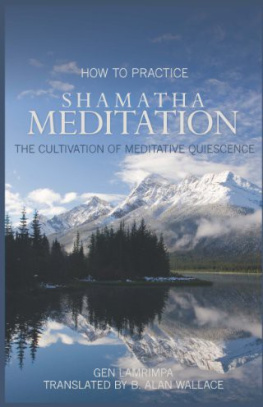P.O. Box 6483
Copyright 1992, 1995, and 2011 B. Alan Wallace and Gen Lamrimpa
All rights reserved. No portion of this book may be reproduced by any means without prior written permission from the publisher.
Gen Lamrimpa. 1934
amatha meditation : Tibetan Buddhist teachings on cultivating meditative quiescence
(Ven. Jampel Tenzin) ; translated by B. Alan Wallace; edited by Hart Sprager.
p. cm.
Translated from Tibetan.
Includes index.
1. MeditationBuddhism. 2. amatha (Buddhism)
3. BuddhismChinaTibetDoctrines. I. Sprager, Hart.
Designed and typeset by Gopa & Ted2, Inc.
Editors Note
O N J ANUARY 6, 1988, at Cloud Mountain Retreat Center in Castle Rock, Washington, a group of twenty-four American dharma students and aspiring meditators began a shamatha retreat under the guiding hand of the Tibetan lama Gen Lamrimpa (the Venerable Jampal Tenzin). Some of us had made a three-month commitment to the practice, others of us were there for six months, and eight of us had committed ourselves to a year of meditation.
The body of this work is made up of the teachings on shamatha Gen Lamrimpa gave during the first two weeks of the retreat. Those teachings were based on The Great Exposition of the Stages of the Path of Awakening by Tsong-kha-pa, who in turn based his teachings largely on Maitreyas text The Examination of the Center and the Extremes .
Gen Lamrimpa included teachings by Asanga (Asaga), namely his text called The Stages of the Listeners , and the teachings of Shantarakshita (ntarakita) on The Essence of the Center. In addition, he included teachings by Kamalashila (Kamalala) The Stages of Meditation as well as the Compendium of Practices .
All of these teachers, as well as Shantideva (ntideva), whom Gen Lamrimpa quotes many times during the teachings, had perfectly attained shamatha during their lifetimes. At the time the teachings were given, Gen Lamrimpa himself had twenty years experience in shamatha and other meditative practices.
Transferring a teachers words to paper is a relatively simple process, but anyone who has experienced them must realize that the task of transferring to the printed page the vibrance and vitality present in the oral transmissions of a true master is next to impossible. Recognizing the impossibilities inherent in the task, all of us who have worked on this book have been motivated by the wish to pass on the essence of the teachings as well as the fundamentally unique quality of Gen Lamrimpas presentation.
Throughout the teachings Gen Lamrimpa began the day by speaking about motivation and the ways in which we, his students, could use the proper motivation to enhance our own internal processing of what we were about to hear. While what he said invariably enhanced our motivation, it sometimes seemed to have less than a direct relationship to the subject of shamatha. In that motivation is such an essential aspect of the practice, there was simply no way or reason to exclude those motivational moments from this edition. Four chapterssix, eight, ten, and twelvehave been compiled from these daily teachings.
In his teachings, Gen Lamrimpa demonstrated his ability to present technical and often complicated material in a very uncomplicated and down-to-earth manner, and one of Alan Wallaces most outstanding qualities as a translator is his ability to transform that down-to-earth presentation into truly vernacular English while at the same time retaining the precision of the terminology and exactitude of the concepts being presented. It is my hope that the delicate balance they were able to create is evident in this rendering.
Finally, Gen Lamrimpa constantly emphasized the importance of continuity. At the same time, he took the liberty to digress from the formal outline of the presentation whenever such a digression enhanced the understanding of his students. Those digressions, which turned out to be shortcuts to the very heart of the matter, are included here just as they came up in the teachings.
It may be helpful for the reader to know a little about the basic daily routine we followed during the retreat. It was very much of an accordion-style schedule, devised so that each of us could function as much as possible on our own time clock. We awoke at five a.m. and went to sleep at around ten p.m. Except for hour-and-a-half breaks for breakfast, lunch, and dinner, and short tea breaks throughout the day, we were urged to devote every waking minute to the practice. We were encouraged to maintain silence in all group areas, such as the dining hall, and to avoid contact with one another. We meditated individually in our own rooms. We started meditating in fifteen-minute sessions and took a fifteen-minute break between sessions, plus an occasional longer tea break as it seemed necessary. This format allowed for as many as eighteen quarter-hour sessions throughout the day at the beginning of the retreat, a total of four-and-a-half hours of actual meditation in what would ideally be a full day of practice.
As our proficiency in the practice increased, we extended the length of the sessions but held firm on the length of the break. At the end of a year of practice, some meditators were doing sessions that extended well beyond two hours. Thus, the time of formal meditation increased from the base four-and-a-half hours to somewhere between six and twelve hours per day, depending on the individuals progress.
For the length of our stay at Cloud Mountain, whatever that length was, we were guided and nurtured by Gen Lamrimpa; by his translator and assistant teacher, Alan Wallace; and his attendant and translator, Thubten Jampa. All of our physical needs were attended to by the marvelous Cloud Mountain staffDavid and Anna Branscomb, Brittany Faulkner, Janet Thomas, and Tom Diggsand the many volunteers from the Seattle area. In truth, the entire experience was made possible through their efforts as well as the efforts of the Dharma Friendship Foundation, which sponsored the retreat, and its president, Chris Borland. And special thanks to Pauly Fitze and Vana Jakic, who transcribed the tapes of Gen Lamrimpas teachings. To all of them we owe the greatest debt of gratitude for the opportunity they provided us to study and meditate, and to make this written record of the teachings a reality.
Sanskrit names and terms have been rendered phonetically for the sake of easy pronunciation. Renderings with full diacritics will be found within parentheses in the text upon first occurrence for proper names and in the glossary for technical terms which occur there.
| P ART I |
| Introduction to the Teachings |
 |

